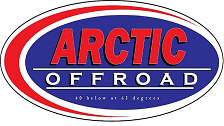Kyle, let me pretty much COMPLETELY disagree! :pbbt:

Lighter - ok, maybe - how much really??? :confused:
More ground clearance? :tease:4 inch gain for 3.5 feet maybe. Did Jeep really engineer this vehicle to be a unibody for ground clearance reasons? This to me sounds ludicrous. Why would they need ground clearance? Speed bumps in shopping malls? These vehicles can be built into incredible wheeling rigs, but they were not designed that way from the factory. Thus it is incredibly highly unlikely that ground clearance played into their decision making.
Cheaper? hifty: This is the only logical conclusion to me. less metal, and an integrated design may equall less material costs and less assembly time and cost. Now, while on 1 or 2 vehciles this may not add up to much, multiplied by the thousands or millions of these vehicles to be made = huge savings. From a business standpoint, this makes some sort of sense.
hifty: This is the only logical conclusion to me. less metal, and an integrated design may equall less material costs and less assembly time and cost. Now, while on 1 or 2 vehciles this may not add up to much, multiplied by the thousands or millions of these vehicles to be made = huge savings. From a business standpoint, this makes some sort of sense.
This argument makes no sense - while yes, the frame twists some, the body is designed to flex with the frame. So you don't have the same issues as a unibody vehicle where the frame isn't as supportive and the body twists more. You're comparing apples and thermostats here. Most solid framed trucks that are made into serious wheelers take little to no strengthening (except around the chevy steering box:doh: ) because the body flexes with the frame. [and I have flexed my plow truck before, thank you!]
Also, how many TJ/CJ/YJ's need frame strengthening when making it a more capable rig? We aren't talking about a vehicle the length of a pickup - we are talking about an XJ.
Thank you for making my point! :expert:
My question was Jeep specific - Jeep being somewhat synonymous with off-roading. So why put a unibody under a vehicle with the off road name, that when you make it into a more serious off-roading vehicle you HAVE to do the work yourself to make it as strong as a solid framed vehicle from the factory?
What's the problem? all the extra work to get a similar result in a vehicle that is supposed to be trail rated in the first place.
Advent Wrote:Lighter, more ground clearance and cheaper all come to mind.

Lighter - ok, maybe - how much really??? :confused:
More ground clearance? :tease:4 inch gain for 3.5 feet maybe. Did Jeep really engineer this vehicle to be a unibody for ground clearance reasons? This to me sounds ludicrous. Why would they need ground clearance? Speed bumps in shopping malls? These vehicles can be built into incredible wheeling rigs, but they were not designed that way from the factory. Thus it is incredibly highly unlikely that ground clearance played into their decision making.
Cheaper?
 hifty: This is the only logical conclusion to me. less metal, and an integrated design may equall less material costs and less assembly time and cost. Now, while on 1 or 2 vehciles this may not add up to much, multiplied by the thousands or millions of these vehicles to be made = huge savings. From a business standpoint, this makes some sort of sense.
hifty: This is the only logical conclusion to me. less metal, and an integrated design may equall less material costs and less assembly time and cost. Now, while on 1 or 2 vehciles this may not add up to much, multiplied by the thousands or millions of these vehicles to be made = huge savings. From a business standpoint, this makes some sort of sense. Advent Wrote:Solid frames need to be reinforced too. Go flex out your plow truck and measure how much the cab and bed move relative to each other.
This argument makes no sense - while yes, the frame twists some, the body is designed to flex with the frame. So you don't have the same issues as a unibody vehicle where the frame isn't as supportive and the body twists more. You're comparing apples and thermostats here. Most solid framed trucks that are made into serious wheelers take little to no strengthening (except around the chevy steering box:doh: ) because the body flexes with the frame. [and I have flexed my plow truck before, thank you!]
Also, how many TJ/CJ/YJ's need frame strengthening when making it a more capable rig? We aren't talking about a vehicle the length of a pickup - we are talking about an XJ.
Advent Wrote:By the time you brace up a standard frame SUV with a roll cage and by boxing the frame, you end up remarkably similar to what you have in a braced XJ. If the end result is the same anyway, what's the problem?
Thank you for making my point! :expert:
My question was Jeep specific - Jeep being somewhat synonymous with off-roading. So why put a unibody under a vehicle with the off road name, that when you make it into a more serious off-roading vehicle you HAVE to do the work yourself to make it as strong as a solid framed vehicle from the factory?
What's the problem? all the extra work to get a similar result in a vehicle that is supposed to be trail rated in the first place.




![[-]](http://www.arcticoffroad.com/images/collapse.png)